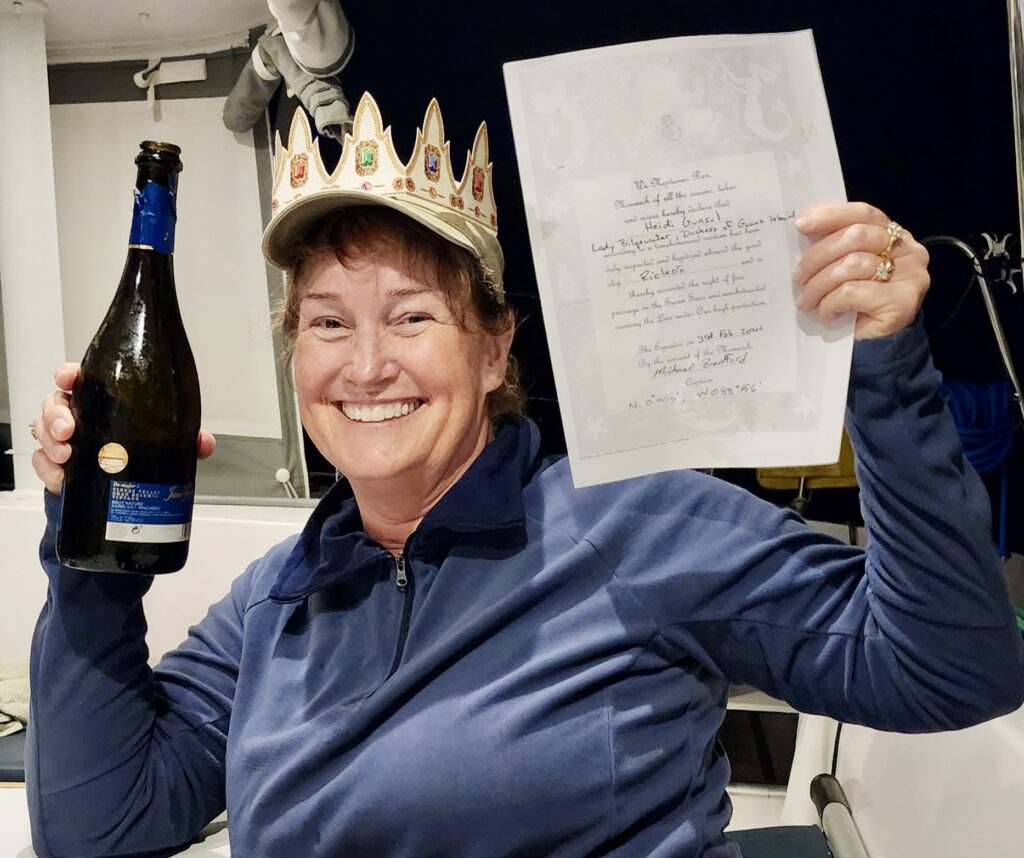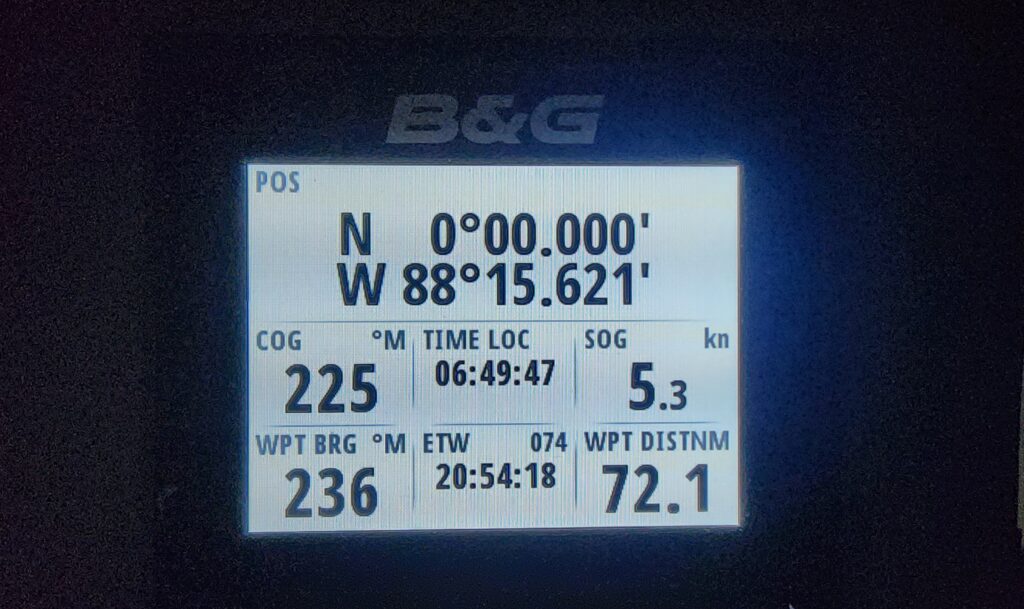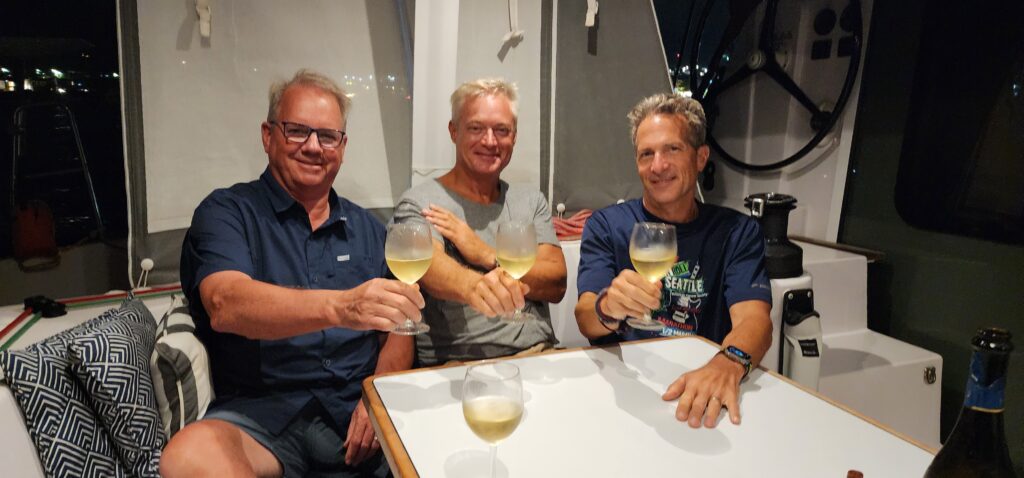Light winds are often the norm when sailing away from Panama City. We were fortunate to have 20-25 knot winds from the start, making for a very fast 2-1/2 days of perfect sailing conditions. The first 12 hours was spent keeping an eye out in the busy shipping lanes and strategizing our gybes. With 20 knots of true wind, Rioleon averaged 240 miles per day (10 knot average). On some big rollers from astern, we surfed down waves at 15 knots and recorded 21.4 knots max! Day 4 the winds lightened so we motor-sailed to charge the batteries, run the watermaker, do laundry, and keep moving along at 6-8 knots. Eventually the winds died to 5 knots and we motored overnight, then sailed again in the morning.
Most of the time at sea is spent relaxing, reading, playing games, cooking, fishing, and changing sails. At nighttime, we had 3 watches of 3-hours each. With Starlink internet access, we keep in touch with the outside world happenings. That’s a huge difference from our South Pacific trip 10 years ago where we only had SSB to pull up daily GRIB files for weather.
Here are some passage photos.
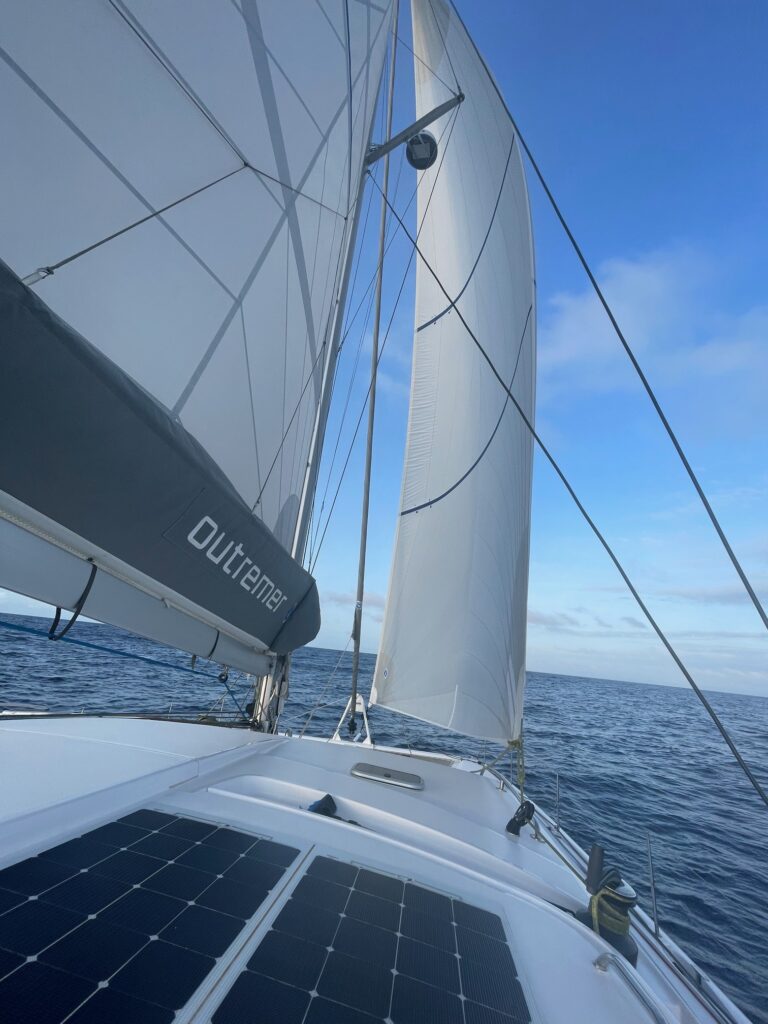
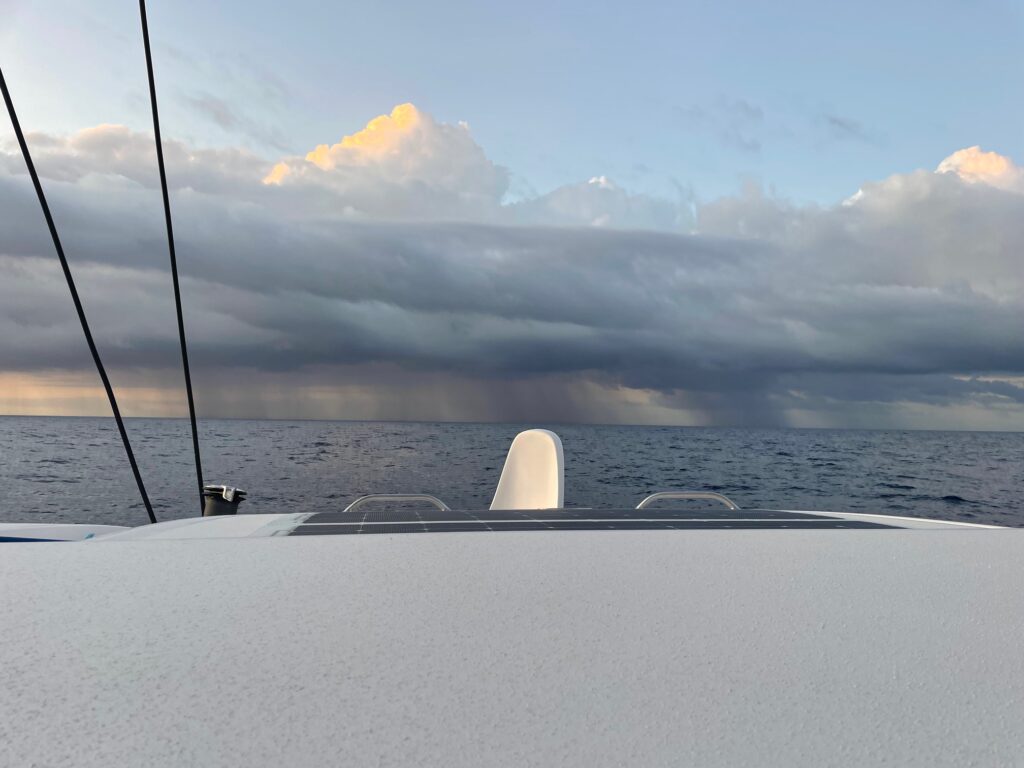
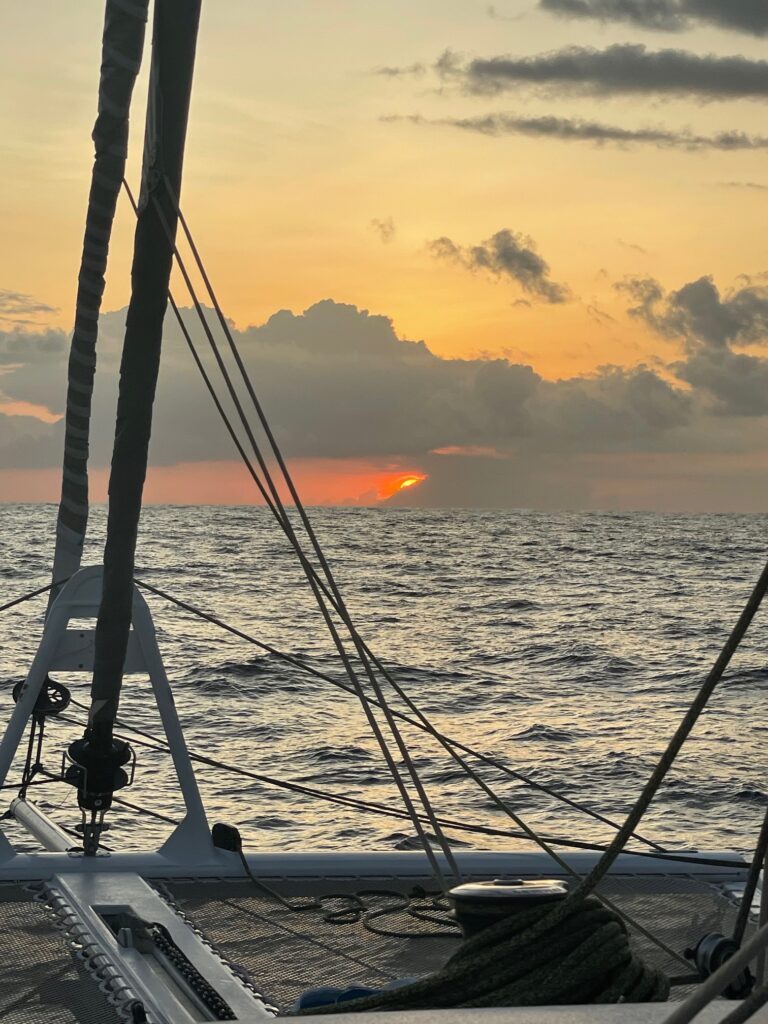


This is a Red-Footed Boobie hitching a ride. The Galapagos Islands is home to the largest population of Red-Footed Boobies in the world.
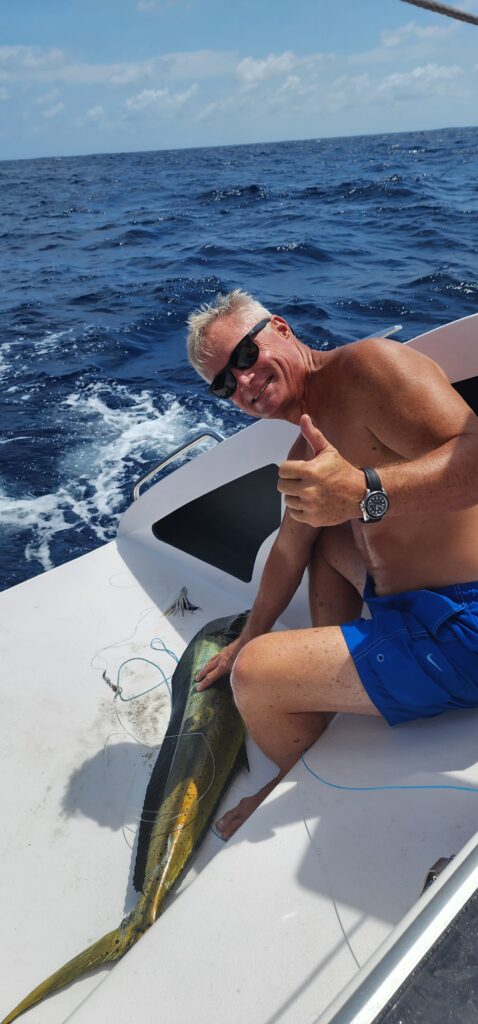
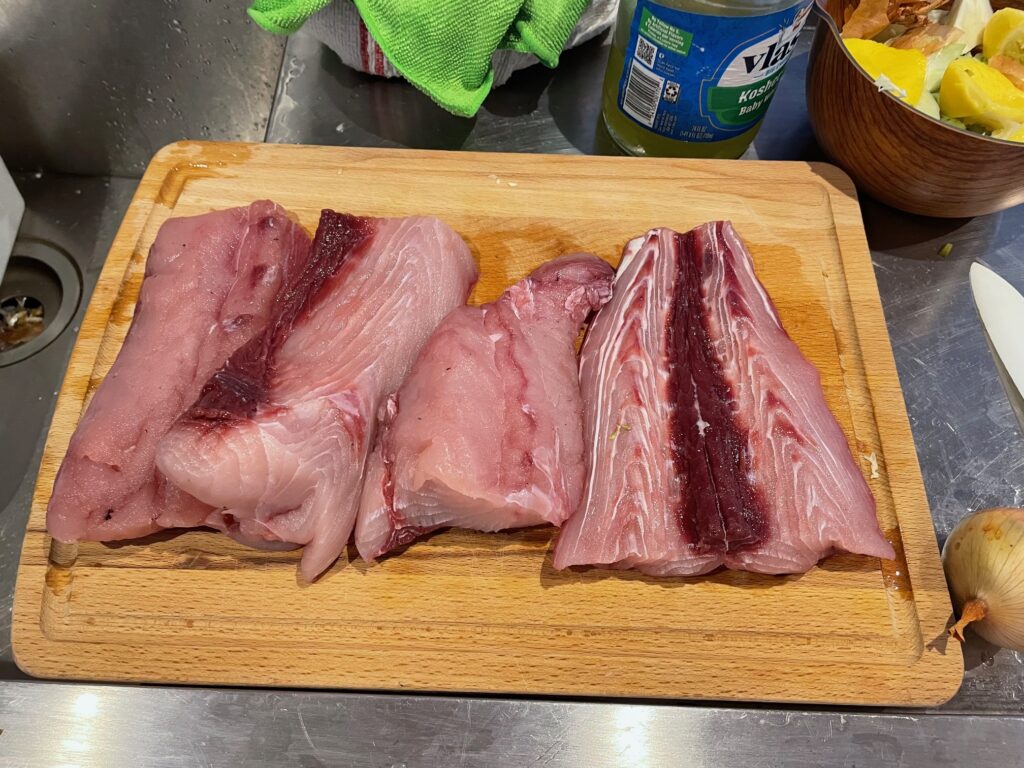
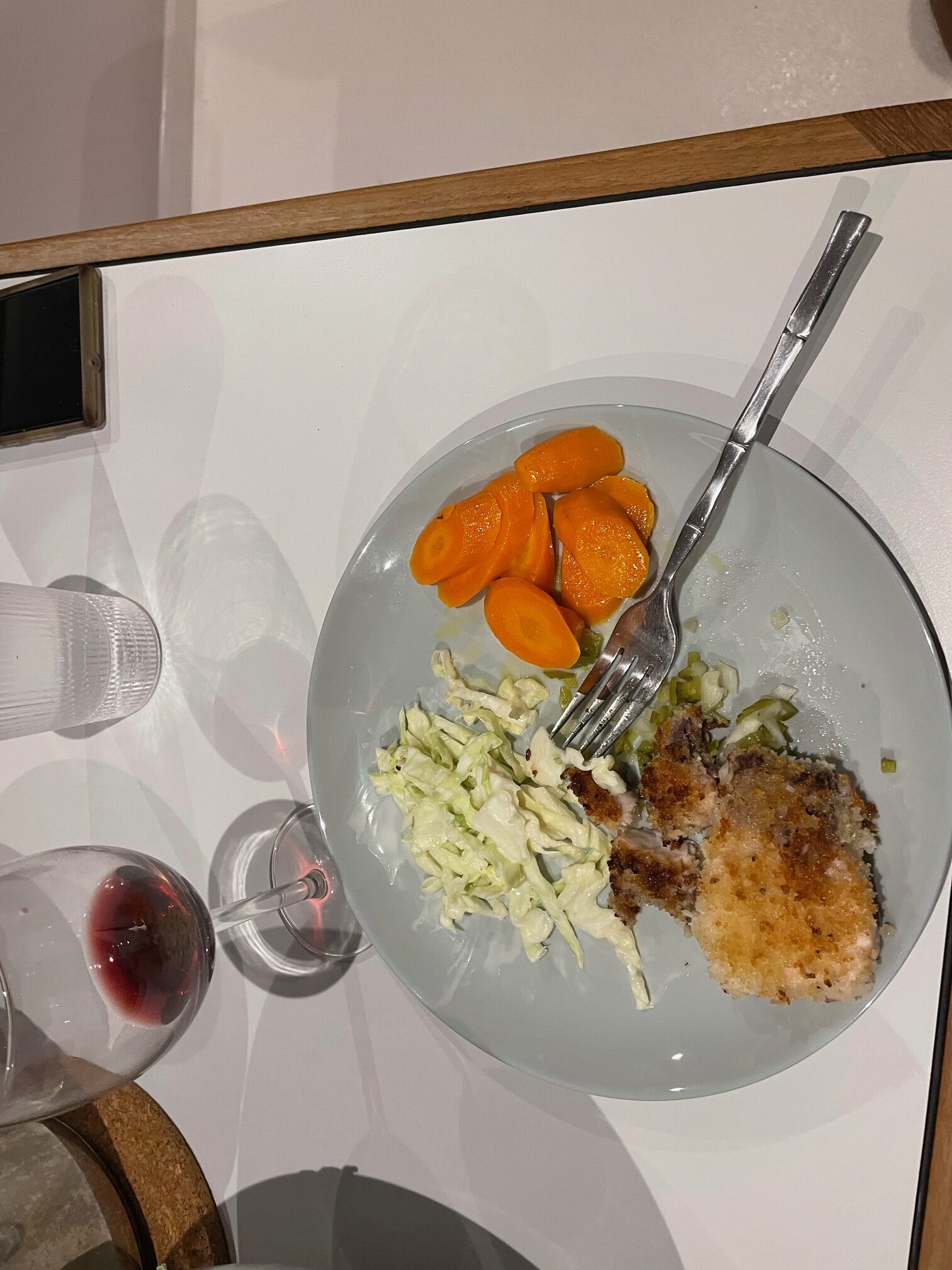
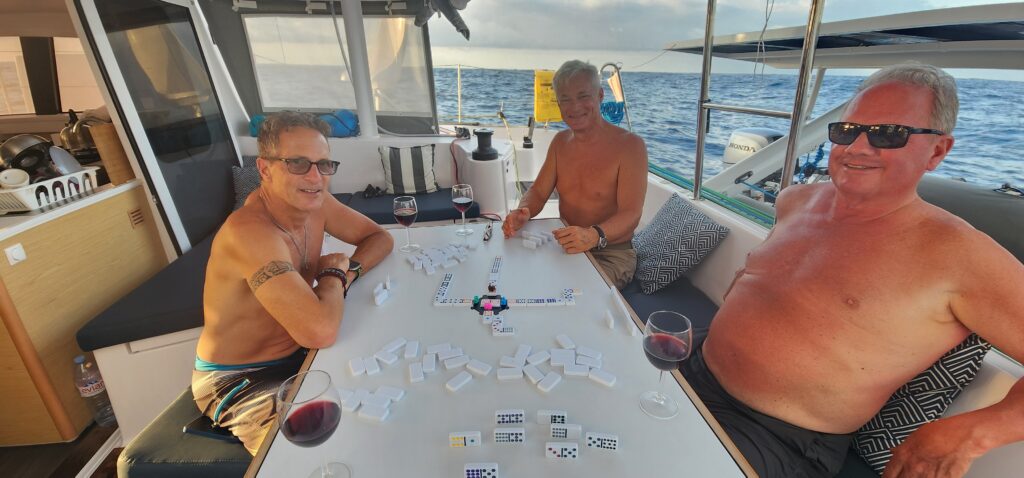
Equator Crossing
If you’ve never crossed the equator on a boat, you’re a Pollywog. We had 2 Pollywogs aboard–David and Heidi. A ceremony and celebration took place after we anchored in Puerto Baquerizo Moreno on Isla San Cristobal. Now we have 4 Shellbacks aboard Rioleon.
